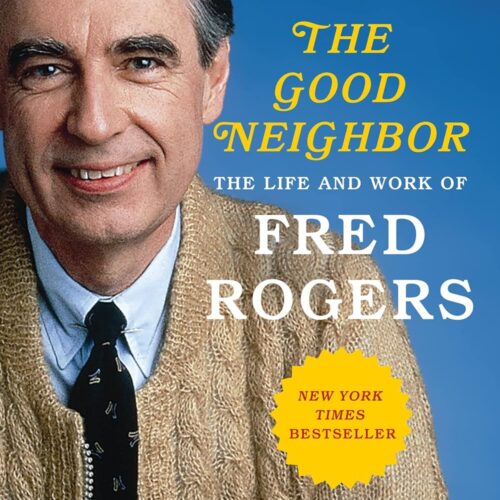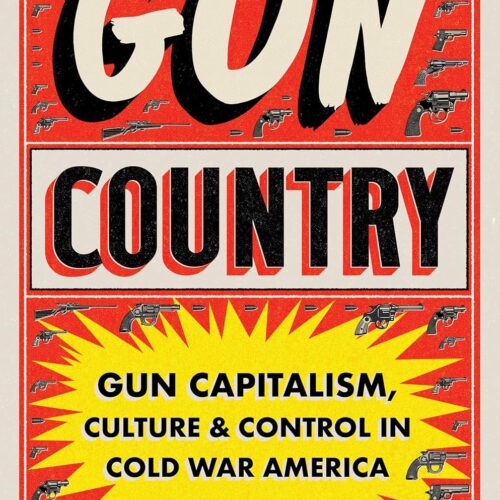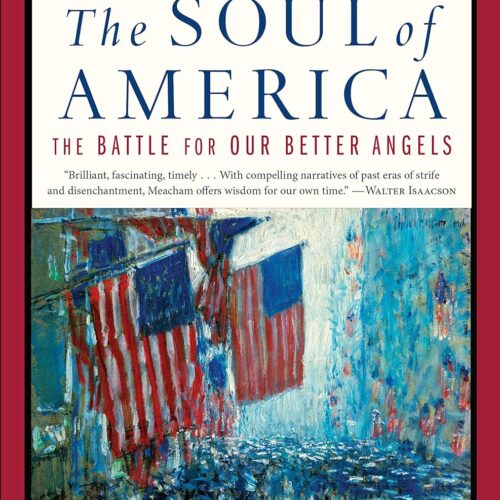Robert Bogue
December 27, 2021
No Comments
I was just graduating high school as the book After the Ball: How America Will Conquer Its Fear and Hatred of Gays in the 90’s was published. There was, obviously, a lot going on in my world, so I can’t say that the perspectives in America about homosexuals was top of mind for me. I was aware of the fear and hatred but largely as a part of the awareness about AIDS and HIV. For me, it was never a thing one way or another. Within a year or two of graduating I met some openly gay and transsexual friends, and we didn’t talk much about how other people treated them. To me, they were – and are – simply friends.
Reading After the Ball wasn’t about trying to understand homosexuality for me. I realized that the book stirred a lot of controversy when just putting my hands on a copy was so expensive. I learned that many of the books had been destroyed by hate groups and that drove the price of the few remaining copies up. The reason I wanted to read After the Ball was because it was effective. It changed the perception of gays in the 90s. A friend of mine with a non-binary child pushed back as I was speaking with him saying that it hadn’t gone far enough. I suppose that’s true – but it’s equally true that the ball was moved very far down the field towards acceptance of alternative approaches to sexuality. (See The Anatomy of Love for other approaches to sexuality.)
I was hoping to find a way to bridge the gaps that were created over the past few years as the world faced COVID-19 and the divisiveness that had been created. I wanted to find a way to help families heal from the divisions that formed Fault Lines. I can’t say that I found those answers, but I did find some other answers that might be more valuable.
Hate Groups
Calling the religious right a hate group is likely to win me more enemies than friends but that’s what they are – or at least were. Jesus’ directives are clear: love your neighbor; these things remain faith, hope, and love – and the greatest of these is love. However, somehow some people get wrapped up in righteousness and pursue fear, hatred, and alienation instead. Unable to reconcile homosexuality with their view of “right,” they lashed out and attacked – and they encouraged and legitimized psychological and physical harm towards gays. The enlightened writing of Jonathan Haidt in The Righteous Mind wasn’t available – and probably would have been rejected if it was. Understanding and acceptance of others wasn’t on the agenda.
I first encountered the title After the Ball in the book The Marketing of Evil. It called out the book as evil. I was so shaken by The Marketing of Evil that I broke my process of reviewing books for it. I didn’t want to draw attention to a book that was so inflammatory. I still feel that way today as I realize that the worst thing that After the Ball proposes is a propaganda campaign – something that even major corporations do all the time now.
In Defense of Sacred Ideas
It’s not that the perception that the Bible finds homosexuality wrong is completely unfounded. The hate groups can point to passages that support their assertion. The story of Sodom and Gomorrah is where we get the word “sodomy” from. And yet, it seems as if the context is twisted and bent to fit the desires of those who tell the story.
For me, one of the most mis-told stories in the Bible is “turn the other cheek.” While growing up, I probably heard the sermon a dozen times or more that this meant you should not lash out to protect yourself. However, when you raise the historical context, you’re confronted with the awareness that what was likely being said is that you should give others a chance to show who they really are. In historical times, one hand was used for wiping your feces and the other for interacting with others. If someone was willing to smack your cheek with their left hand it was clear the kind of person they are.
The story of Sodom and Gomorrah is a story that is as much about a failing to respect others’ wishes as it is about sodomy directly. However, it’s easy to miss this subtlety when the passages condemn the whole of cities instead of focusing on the fundamental lack of respect for one another.
Homophobia and Homo-hatred
The manifest problem isn’t a fear of homosexuality but rather is a hatred of it. It’s not that people are afraid of homosexuality directly, it’s their lashing out against it and the decision that gay and lesbians must be somehow bad or evil. It’s the response that causes us to separate the world into us vs. them, and homosexuals are decidedly “them.” (See Mistakes Were Made (But Not by Me) for more on us vs. them.)
Hatred is the unfortunate and natural outcome of a fear. Too few people are taught how to address their fears head-on and conquer them in a positive way with tools like desensitization. (See The Body Keeps Score for more on desensitization.) Instead of the fears getting smaller, the reactions get larger, and the result is the need to lash out to reduce the fear. It’s been said, and it’s psychologically accurate, that those who lash out the most about homosexual behavior are the most drawn to it. Their attacks on homosexuality are primarily to protect themselves from it.
The Big Lie
After the Ball calls it “the big lie.” The lie is that homosexuality doesn’t exist. The data puts it at about 10% of the population – and yet too many people don’t believe they know a single homosexual person. At least, that is what the data said decades ago. Somehow, one in ten people were homosexual, but people didn’t know anyone who was gay. Given Robin Dunbar’s work on stable social relationships, this is statistically improbable. (For more on Dunbar’s work, see High Orbit – Respecting Grieving.)
However, if no one knew anyone who was gay, then maybe, just maybe, it didn’t really exist after all. We’re willing to accept that there are Yeti with shadowy, impossible to see photos that depict a dark blob, but when it comes to gays, we just can’t believe.
Come Out, Come Out Wherever You Are
“Olly Olly Oxen Free” was the call we’d make when hide and seek was over, that we had given up. We’re still not quite there with homosexuals. While much progress has been made with the acceptability of homosexuality, there are still prejudices and biases. There are still stigmas and shunning, and it makes it hard for those who have homosexual feelings to come out into the open. It’s hard coming out of the closet.
Courage is not the absence of fear, it’s moving forward despite the fear. (See Find Your Courage for more.) If you want to increase courage, you reduce fear. More people put themselves at professional and personal risk by “coming out of the closet” and openly sharing their homosexual orientation. This courage is one part of the plan for overcoming fear and hatred. The more that gays and lesbians are seen as normal and acceptable, the harder it will be for individuals to be attacked, dismissed, and shunned.
Call It What You Will
An exasperated Abraham Lincoln was said to have asked his Cabinet, “How many legs does a lamb have if you call the tail a leg?” The answer five came up and was quickly rejected by Lincoln. “Wrong! It’s still four. Calling it a leg doesn’t make it one.” The easiest – but not the best — way to deal with a problem is to deny it exists. The premise here is the problem that straight America just wants gays to cease to exist, and denying that they do in some distorted way makes it true.
Like Lincoln’s quote, it doesn’t make it so – but more importantly, I’m slightly disturbed that it’s framed as a problem. Instead of looking at homosexuality as a different perspective or set of beliefs, many attempt to elevate it to a difference in values at the level of morality and immorality. It turns out that what you call it – and how you communicate about it – really matters.
Real Immorality
Part of my frustration with it being converted into a moral issue is that I believe that immorality should be reserved for those things which violate the foundations of morality. (See The Righteous Mind for the foundations of morality.) Albert Bandura spoke of the conditions that lead to immoral behavior in Moral Disengagement, and Philip Zimbardo spoke of it in The Lucifer Effect. Vicktor Frankl spoke about what he saw of the Nazi concentration camps in Man’s Search for Meaning. The differences are striking. The first moral foundation is care/harm, and these other examples violate care/harm in ways that all but a few deviants who happen to be homosexual haven’t done. It should be quickly noted that there are plenty of heterosexual deviants, too. The point is that homosexuality in and of itself doesn’t mean – or imply – that other people are harmed.
Certainly, we face issues then and today which could be called moral issues – but they’re not the issues about how we interpret the nuances of the Bible – or of other religious texts. Because people don’t subscribe to your views and are not motivated by the same things that you’re motivated by doesn’t make them evil or bad. It makes them different. (See Who Am I? for more on Reiss’ 16 basic motivators and how we’re all motivated by different things.)
The Propaganda Machine
Propaganda gets a bad reputation. It’s been used in very evil ways. Perhaps the greatest example is the propaganda war that Adolf Hitler waged against Jews and Russians. (The Russians get less attention because they had an army and put up a more violent fight.) The propaganda specifically made both groups seem sub-human. That process created the conditions which enabled the concentration camps and the attempted genocide.
Propaganda at its most fundamental is a one-sided approach to a topic designed to persuade others that the purveyor of the propaganda’s point of view is right. The proposed Waging Peace Campaign rests on three pillars.
#1 – Desensitization
If you want to get over fear, the technique developed by Albert Bandura may just be the thing. Afraid of snakes? Find safe ways to look at pictures of snakes, then be in the same room, then near them, then touch them, then hold them. It takes time, but desensitization works. It’s not the fear of snakes that After the Ball is trying to cure. It’s fear of homosexuals – and the process works en mass as well as it works one-on-one. The more that homosexuals are portrayed in mildly uncomfortable but not threatening ways, the more normal it becomes, and the less fear there is.
We know that anything that becomes common elicits less of a reaction. If encountering openly homosexual people is common, then it shouldn’t be such an issue.
#2 – Jamming
Another, more disruptive, approach to changing perceptions is to introduce two incompatible emotional responses at the same time. For instance, introducing the idea of a wholesome family and then revealing that the parents are homosexual necessarily creates the need for the two conflicting emotions to be reconciled. While the process is not easy for the individual, it can be effective at causing the lesser emotion to recede.
Other approaches to jamming place a negative emotion with the positive emotion that drives bigotry. Bigotry continues because we receive a reward for acting on our bigotry, thus reinforcing it. (See The Power of Habit for more on reinforcement.) However, if you spoil the reward by adding in guilt, shame, or regret, you steal the power that the engine needs to reinforce the behavior and thereby lessen it.
#3 – Conversion
While the first two techniques are aimed at reducing fear and bigotry, the third is about increasing likability. That is, while ambivalence is a good start when you’re coming from bigotry and hatred, it doesn’t go far enough to protect against backsliding.
The real trick is to create friendships with straight people – and to allow those friendships to spread. This is easier said than done as Mistakes Were Made (But Not By Me) relates how Al Campanis could like Jackie Robinson and know that he was a fine baseball player but simultaneously not believe that he’d make a good manager.
Certainly, making friends and creating affinity with others is the right strategy, the degree to which it may be generalizable is questionable.
Out Come the Freaks
One of the most direct criticisms of the homosexual movement for equality comes in the form of the visibility of the “freaks.” That is, those people who represent the furthest extreme. Those who would seek to shock straight America into accepting the movement do more damage than good. It’s for this reason that Kirk and Madsen recommend that the more socially acceptable come forward (where they’re able) to be spokespersons for the movement rather than allowing parades of debauchery to be the single message that heterosexual America sees.
After the Ball divides homosexuals into two broad categories. The “Rs” look like and can be seen like straights – and they like it that way. The “Qs” can’t look like straights – and they don’t want to. They want to be queer (different). Despite the natural aversion to standing out and being recognized as gays, if desensitization is to be effective, it needs the “Rs” to take up the banner. Without the normalcy, gays could be rejected out of hand.
Free Software
Richard Stallman was the programmer-activist who led the charge for free software. It’s spawned a whole market of open-source and openly licensed software that has made the world better. Yet many in the world of open-source software cringe when they hear that he’s spoken at another event or to the press. His beliefs are so extreme that they seriously jeopardized the legitimacy of open source software.
Quietly, other voices started emerging with more moderate views and a less militant approach to finding ways to drive commerce without perceived exploitation. This is the same approach that After the Ball proposed for improving the relationship between heterosexual and homosexual people.
The Principles
After the Ball proposes a set of principles that gays should use to improve the situation realizing that gays would have to be better than straights to gain acceptance. They are:
- Don’t Just Express Yourself: Communicate –Focus not just on expression but what the message is that you’re sending.
- Seek Ye Not the Saved nor the Dammed: Appeal to the Skeptics – The greatest opportunity for any movement is to appeal to those who are interested in learning more and who have not yet developed any prejudices.
- Keep Talking – The goal is simply to work on desensitization, and that requires a lot of low-grade discomfort. It’s the kind of discomfort that is acceptably generated through talking.
- Keep the Message Focused: You’re a Homosexual, not a Whale – Don’t pickup every other cause like lost puppies and bring them into the fold. Stay focused on what is important.
- Portray Gays as Victims of Circumstance and Oppression, not Aggressive Challengers – Look for support and sympathy rather than invite conflict, resistance, and battles.
- Give Potential Protectors a Just Cause – Make it easy for others to join the cause by focusing on the fact that gays are being discriminated against rather than trying to convert others’ sexual practices.
- Make Gays Look Good – Appearing as model citizens and pillars of society makes it easier for others to support you.
- Make Victimizers Look Bad – Where possible and appropriate, allow victimizers’ actions to become well known, so that others are repulsed by their actions.
Civil Disobedience
After the Ball has advice for civil disobedience, from ensuring non-violence (on the part of those practicing it) to communicating the willingness and acceptance of being arrested for the disobedience and the need to connect the act of disobedience with the cause. Unfair taxation of tea preceded the Boston Tea Party, and so civil disobedience must make the connection between the act and the cause clear.
Stand and Be Counted
Today, we’re three decades after the publication of After the Ball. Much has changed and gotten better. Thankfully, gay bashing has receded to rarity. However, there are still legitimate concerns about the degree to which someone can be open about their sexuality for fear of reprisal. In some sense, this feels like a continuing journey. It may be that there is no after in After the Ball; you’ll have to decide for yourself.








